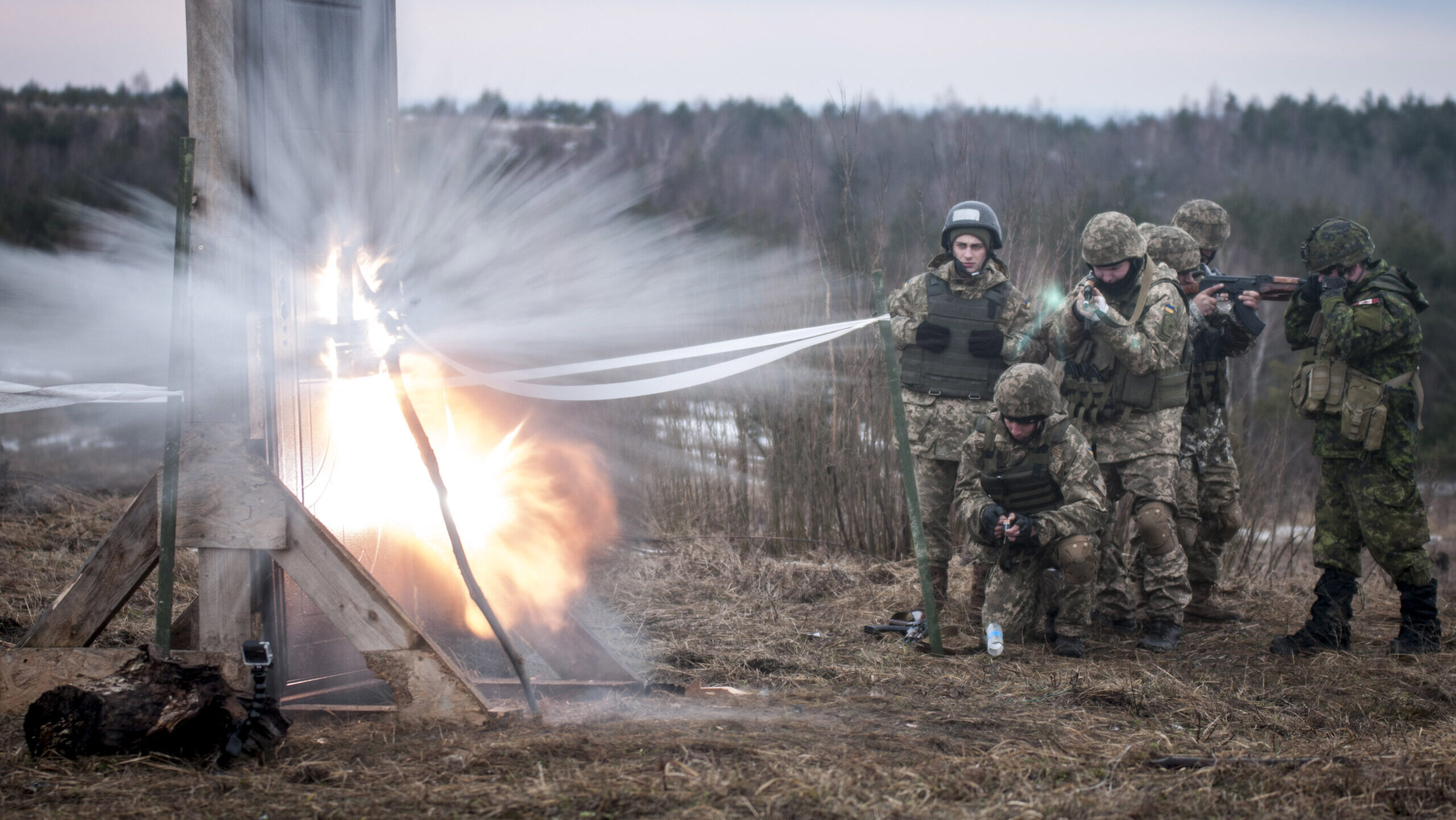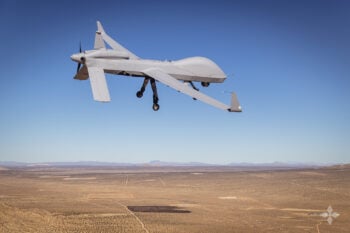
Ukrainian combat training center engineers detonate an explosive charge to breach a door before entering a mock building as part of training with Canadian and US engineers (US Army)
BELFAST — Annual global defense spending jumped by 9 percent in 2023, reaching a high of $2.2 trillion, and is expected to beat that “record” this year, new analysis from the United Kingdom’s International Institute for Strategic Studies has found.
The unprecedented levels of spending are partly a result of NATO members shoring up their defenses in the wake of Russia’s invasion of Ukraine, but the Israel-Gaza conflict, China’s aggression in the Taiwan Strait, Iran’s proxy network targeting US forces and coups across sub-Saharan Africa have all contributed to a “picture of strategic instability and a new era of contested power,” said Bastian Giegerich, Director-General at IISS.
The US still dominates global defense spending, accounting for 41 percent of all expenditure and 70 percent of NATO spending, according to the think tank.
China holds a 10 percent share of global defense spending, ahead of Russia’s 5 percent. Outside of the US, remaining shares are held by the rest of the world (27 percent) and non-US NATO nations (17 percent).
“The deteriorating security landscape and increase in defense spending has driven the global total in 2023 to the highest level recorded by the IISS at around 2.2 trillion US dollars, up 9 percent from a year earlier,” said Giegerich. “This year’s figure, 2024, will likely be higher again.”
The Future Of The Conflict In Ukraine
The analysis, released today from the think tank’s newly published Military Balance report — a comprehensive annual review of global defense capabilities and associated economic trends — also reveals that Russia has lost over 3,000 tanks since fighting with Ukraine started in 2022, as many as Moscow held in its pre-war inventory.
The heavy rate of attrition has forced Russia to increasingly rely on pulling older, less capable tanks from storage and field them urgently. Giegerich noted that this strategy has “at times” seen 100 tanks fielded per month, adding that such a trend is only sustainable for a maximum of three years and will have to “sacrifice quality for quantity.”
Despite such a forecast, Russian “missile and UAV barrages” have had a significant impact on Ukraine, with Kyiv also having to bear heavy equipment losses, offset by Western supplied replacements.
As the war enters a third year, Western governments are again faced with deciding “whether to furnish Kyiv with enough weapons to deliver a decisive blow, rather than merely enough not to lose,” explained Giegerich.
Turning to industrial base problems, he said that ammunition production difficulties had been “laid bare” by the failure of European Union member states to deliver, as promised, one million artillery shells to Ukraine by March 2024.
Even so, a number of the largest defense contractors across the US and Europe have established “record level” backlogs since the war in Ukraine began.
The health of Russia’s industrial base and military export business is more difficult to discern because even though Alexander Mikheyev, chief executive of Rosoboronexport, said in November last year that the company had recorded a $50 billion order backlog. “Whether that will come through to fruition” depends on evading sanctions, suggested Fenella McGerty, senior fellow for defence economics at IISS.
She added that some “large contracts” have continued but key “export partners” including India and Indonesia have decided to diversify supply chains.
The focus by Russia of attempting to export equipment used in Ukraine to potential buyers, also “limits” frontline options, said McGerty.
Similar to recent warfighting analysis from military officials, Giegerich also acknowledged that Ukraine’s counteroffensive had proven challenging because of Russian minefields and fortifications slowing progress. But Kyiv had found “greater success” with “deep strike” operations that have hit targets in Crimea and Moscow.
IISS estimates that total Russian military spending is currently equivalent to one third of the country’s national budget and will soon reach 7.5 percent GDP, though disparity remains between financial reserves and being able to adequately field modern equipment, as demonstrated by the reliance on Iranian drones and dependence on North Korea for other equipment.
TAI exec claims 20 Turkish KAAN fighters to be delivered in 2028
Temel Kotil, TAI’s general manager, claimed that the domestically-produced Turkish jet will outperform the F-35 Joint Strike Fighter.


























